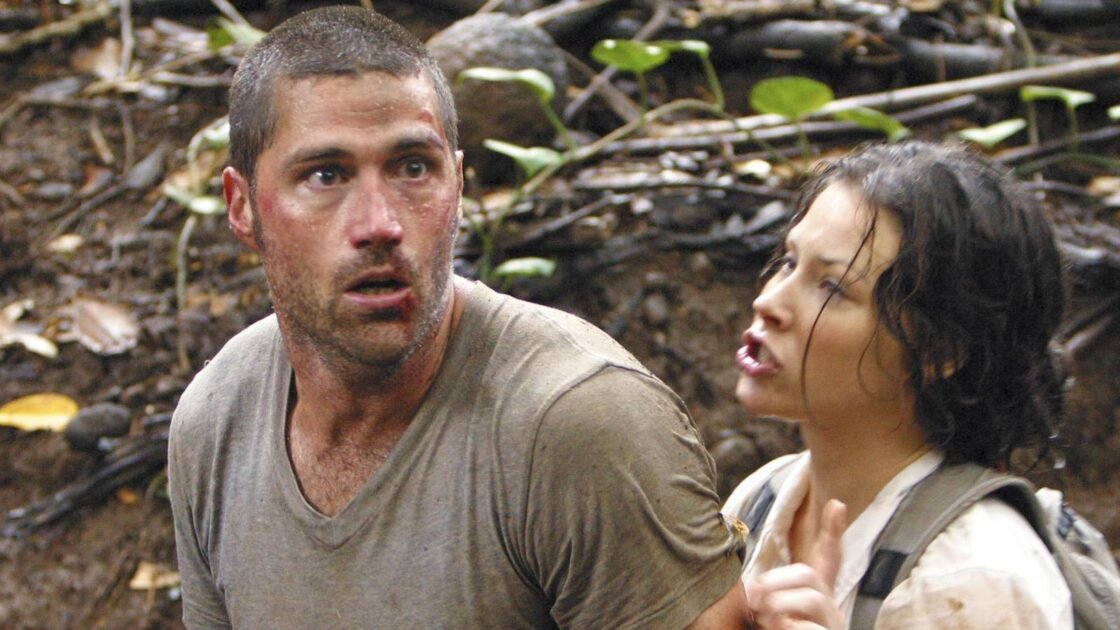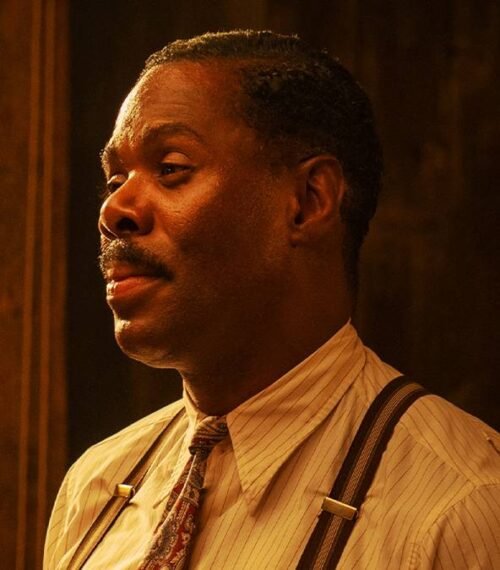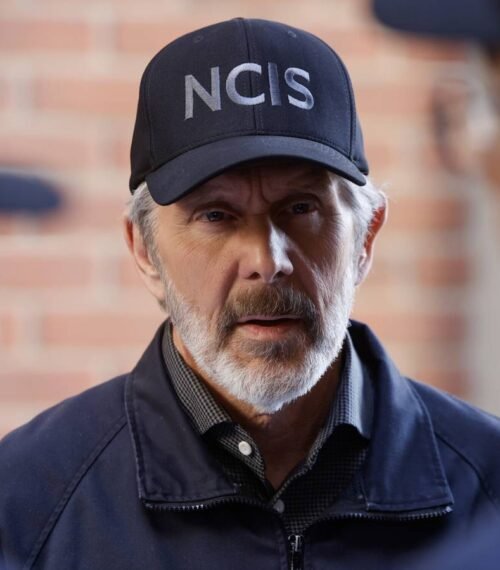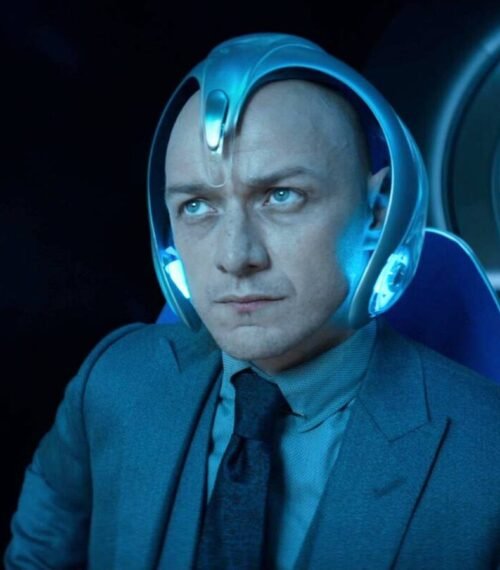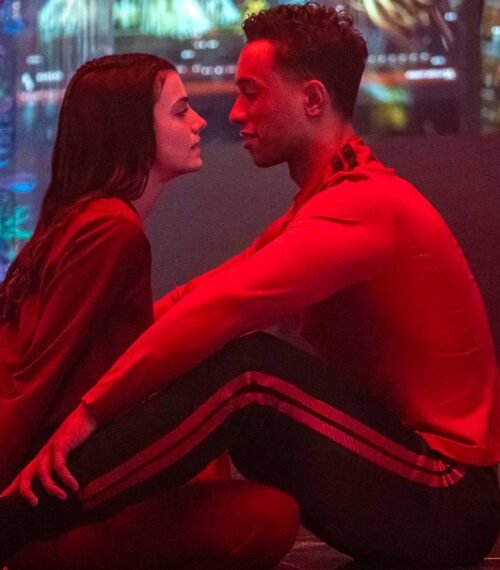The timeline of Lost can get confusing, so it's worth breaking down era by era. If you've gotten to the point in Lost where the show about a plane crash on an island has suddenly become about time travel and alternate dimensions, and you're finding yourself confused about the whole ordeal, just know that you're not alone.
Lost's ending is one of the most divisive in TV history, and there are many reasons why. Lost began primarily character-focused, as, although the Island and its mysteries offered plenty of plot, the show succeeded with its episodic format, where each installment focused on the plight of a different character. The show ends on a similarly subtle, interpersonal note.
The show's finale is extremely character-driven, examining how Jack Shepherd's experience on the Island finally allowed him to find peace. This was off-putting for many viewers. Lost had built up the mythology and overarching, often convoluted plot of the Island, which, in the latter seasons, overshadowed the focus on character.
This context matters when examining Lost's timeline, because the elaborate nature of these varying periods is a huge component of why fans wanted more answers from the finale. So, when going through each component of the show, it's critical to think about what it contributes to the overarching narrative, whether it was explained well enough, and if that even matters.
Ancient Civilization On The Island
Indefinite BC—Roughly 1 AD

The Mother (Allison Janney) shows young Jacob and young Man in Black the Heart of the Island in Lost
Our story begins when a mysterious, unnamed woman, commonly referred to as "the Mother," arrived on the Island and became the protector of "the Source." This is the Heart of the Island, a well of light, water, and electromagnetism, presenting properties of both mystical and scientific nature that will permeate throughout the Island's future.
The statue of the Egyptian goddess Taweret was erected at some point in the BC period. While we have no context for when or how many Egyptians arrived on the Island, their influence exists thousands of years later in the form of hieroglyphs and more. This statue would later become the home of Jacob.
At some point, around 1 AD, a pregnant Roman woman named Claudia was shipwrecked on the Island, where she was found by the Mother. The Mother helped her give birth to twins, one of whom was named Jacob, and the other, who was not named, later became the Man in Black (MIB). The Mother killed Claudia and raised the twins as her own.
Years later, the conflict between Jacob and MIB begins over their shared destiny. Jacob wishes to follow their Mother's belief and protect the Source, while MIB wants to interact with other shipwrecked humans on the Island. The Mother kills the shipwrecked humans, then takes Jacob to the Source and makes him immortal.
In a fit of rage, MIB kills the Mother, then Jacob returns the favor by killing him. When MIB's human body is destroyed, the smoke monster is created. MIB and the Mother's bodies are laid to rest in the caves, where the Oceanic 815 survivors find them roughly 2000 years later.
Context
This is one of the most confusing eras of the show, with only a handful of flashbacks to go off of. While the story is told with mystical, biblical elements in mind, there are pieces of it that feel contrived. This is likely due to the creators being forced to connect the mythology to previously established ideas from the series.
The nature of Jacob's immortality, the creation of the smoke monster, and the rules created by the Mother to prevent violence between Jacob and the Man in Black are all foggy at best. They cannot be explained concretely and must be attributed to inconsistent mystical properties, but again, some of it is hokey.
The Arrival Of The Black Rock
1860s

Man in Black (Titus Welliver) offering Richard (Nestor Carbonell) a knife in Lost
The Black Rock was a British trading ship that stopped in the Canary Islands searching for English-speaking slaves to take aboard. This included Ricardo (later Richard) Alpert, who had recently lost his wife, Isabella, due to sickness, and killed a doctor, which led to him being made a slave.
The Black Rock arrived on the Island in a storm, destroying the Tawaret statue and landing in the jungle. MIB finds Richard and uses him in a scheme to try and kill Jacob, the latest of many involving the various humans Jacob had brought to the Island to study throughout the course of history.
Context
Richard's arrival on the Island marks the beginning of the Others. Previously, there had been numerous shipwrecks and small civilizations around the Island, but this is the first time Jacob forms an organized group, assembling potential candidates to replace him as the Source's protector, which Richard agrees to lead in return for immortality.
With this line of symbolism in mind, one could compare Jacob's need for a successor to a higher power who wants humankind to protect itself from evil. This is one aspect of the show where the potential symbolic meaning and the narrative components align quite nicely, and it explains who the Others are.
The US Army Brings Jughead To The Island
1954

Young Eloise Hawking pointing a gun at Daniel Faraday in Lost
This is a rather brief stint that won't require much contextualization. In 1954, the United States Army brought a hydrogen bomb, nicknamed Jughead, to the Island for testing. These soldiers are quickly killed by the Others, who take control of the bomb.
Daniel Faraday and other survivors arrived from the future, and Richard allowed him to disarm the bomb. Faraday advised the younger version of Eloise Hawking, who would eventually become his mother, to cover the bomb in concrete. It remained covered until 1977.
The Dharma Initiative's Arrival & War With The "Hostiles"
1970–1992

Pierre Chang wearing a white lab coat in a scratchy old Dharma Initiative orientation film film from season 2 of Lost.
The Dharma Initiative was first formed and arrived on the Island to construct their facilities in the early 1970s. Their goal was to save humanity through the controlled alteration of scientific laws, which would hopefully change the numeric values of the Valenzetti Equation. The numerical values are… You guessed it: 4, 8, 15, 16, 23, 42! More on that soon.
At a certain point during this period, Oceanic 815 survivors and others from the future arrived through time travel, and their influence casts scientific paradoxes that can not fully be explained. So, it's worth exploring the events as we knew them before the time travelers' influence, before the additional context.
Dharma arrived on the Island and began conducting various experiments, which led to conflict with the "Hostiles," Richard's Others, who are now led by Eloise Hawking and Charles Widmore. This conflict persisted for years, but a Truce was eventually formed in 1973, which created a period of uneasy peace.
In 1977, an event called "the Incident" occurred at the Swan site. This is believed to have been the fault of excessive drilling, by which the Dharma Initiative triggered a blast of electromagnetism. To contain this electromagnetism, the Swan station (later the survivors' "Hatch") was constructed to study and manipulate the Island's electromagnetic properties. The button was established to prevent the over-accumulation of electromagnetism.
Later, in 1988, Danielle Rousseau and her team were shipwrecked on the Island, and Ben was sent to kill her. Instead, he took her child, Alex, and returned to the Others, angering Charles Widmore, who wanted to maintain the sanctity of their organization. Widmore, by the way, had left the Island and fathered Penny. He was a power-hungry hypocrite.
In 1992, Ben finally fulfilled his destiny, as he was sent to purge the Dharma Initiative. After this, Dharma was essentially gone from the Island, though its impact would last in the following decades. Ben subsequently exposed Widmore for having a child off the Island, leading to Widmore's exile and their long-term rivalry.
Context
Now, to contextualize the Dharma Initiative's purpose: the Valenzetti Equation was a fictional mathematical sequence established during the Cold War to determine humanity's remaining time before nuclear annihilation. These same numbers are also Jacob's final candidates, representing Locke, Hurley, Sawyer, Sayid, Jack, and Jin.
Humanity predicts the downfall of its species through the nuclear bomb, the scientific symbolism of death and destruction. Jacob's failure to find a candidate would have the same effect, so one could make the connection that MIB's destruction of the Island and subsequent escape would result in a humanity-destroying nuclear holocaust. It's no wonder that these numbers have a dark presence throughout the series.
The conflict between science and faith is once again symbolized by the Dharma Initiative and the Others. The Others ultimately vanquish the Dharma Initiative, but they're not the ones to save the world, either. Once again, narrative and symbolism are cohesive here, and we'll come back to this as we explore the downfall of the Others in the 2004 timeline.
Various Character Flashbacks Leading Up To Oceanic 815
1950s–2004

Christian Shephard (Jack's Dad) in Lost
One of the most integral elements of Lost's narrative is its flashbacks. Since these stories are numerous, it's not really worth going too deep into any of them. The 1950s show Locke's birth, and from then on, we see flashbacks leading up to the moment of the plane crash. At times, we return to different moments with fresh perspectives.
During this time, Jacob began traveling the world for his final candidates, manipulating events in strange ways. His influence helped push the characters on their way, but in all cases, it was just a small gesture, such as giving Sawyer the pen to write his letter.
Lost is a show about candidates being selected to save the world, but it's also a series about human beings. These are people who are "lost," as circumstances, character flaws, and other people have left them in difficult positions, often lacking purpose or meaning. These flashbacks are exhibitions of their lives, typically showing integral, life-altering moments.
Lost is an epic, but to make an epic important, it must have internal human elements. Our characters represent normal people, like you and me, in our struggles, both ordinary and extraordinary. Importantly, many of these characters reach their lowest points before reaching the Island.
The fact that these moments are often either interconnected with other characters or controlled by Jacob suggests themes of fate and predetermination that are tied to Lost's core meaning. Whether it be by fate, chance, or choice, humans have the capacity to find purpose, and that is how the world can be saved.
The Original Oceanic 815 Crash
September–December 2004

The island in Lost
On September 22, 2004, Oceanic Flight 815 from Sydney to Los Angeles crashed onto the Island. Desmond, who had been on the Island for three years working with a man leftover from the Dharma Initiative to press the button, is believed to have caused the crash by failing to press the button on time. It's also possible that Jacob influenced this event.
Season 1 of Lost consists of 44 days, with "Exodus, Part 2" ending on November 4, 2004. This is the initial period where Oceanic 815 lands, and the survivors find ways to survive on the Island despite its numerous threats and mysteries. The tail-end of the plane's passengers also survive during this period, but are much worse off.
Season 2 begins on that same day and lasts until November 27, 2004. Season 2 follows the Survivors into the Hatch, where they begin to learn more about the Island's secrets. Exploration further inland also puts them in conflict with the Others, and Ben Linus goes undercover to learn more about the Survivors and the Hatch.
Season 3 kicks off at the Hydra station on November 28, 2004, and lasts until December 21, 2004. This season primarily focuses on the conclusion of the conflict between the Survivors and the Others, with Jack and Juliet leading the Oceanic 815 team to a conclusive victory. The Survivors begin their journey home when Naomi crashlands on the Island.
Season 4 shows the Survivors attempting to make contact with the freighter while Ben and Locke hope to prevent it. Season 4 concludes on December 31, 2004, when Penny finds the Oceanic Six and Desmond in the lifeboat. For better or for worse, they leave the Island.
The Oceanic Six Return To Civilization
2005–2007

Jack in a flash-forward in Lost
The Oceanic Six spend three years away from the Island, with periods of happiness, before discovering an immense metaphysical struggle. Jack and Kate marry and parent Aaron, but old habits die hard for Jack as he turns to alcoholism. Sayid finally reunites with Nadia, but she dies, and he becomes a hitman for Ben.
Hurley ends up back in the mental institution. Sun struggles without Jin. Everything is a disaster, and Jack eventually brings them all back together to return to the Island in 2007. On Ajira 316, they return to the Island, but part of the group is caught in a time flash, sending them to 1977.
Context
The reason I described the conflict of the Oceanic Six as metaphysical is that, off-Island, nothing seems to go right for them. It's as if by leaving, the Survivors set the world off-balance. The Valenzetti Equation, or MIB's escape, is imminent, and these characters cannot find peace because of it. They must return to save the world.
The Survivors return to the real world, but the tone feels bleak and off-putting. This is not the place they once knew. On the Island, they were given a purpose, and the departure from the Island symbolizes them trying to run from it. Specifically, Jack tries to return to a life of science, but Locke's words and everything he's seen on the Island have left an imprint on him.
Jack may be stubborn, and he still largely refuses to admit it, but he knows there is something cosmic at stake. He has to return, and the others have to come with him. Only by dying could John Locke prove to Jack just how serious this all is, and Jack is finally able to discover his faith. He can become the hero the story needs.
Lost's Time Travel Explained

In 2004, as the Oceanic Six leave the Island, Ben Linus decides to "move the Island." He seems to understand how this works, but by using electromagnetism to change its spatial location, its temporal properties are also disrupted, causing waves of time flashes that push certain characters to different moments in time.
Ben himself wakes up 10 months later in the Sahara Desert, transported through time and space. Other characters are sent on a zany trip through multiple eras on the Island, back to the 1800s, and the 1950s, and more, before reaching 1974.
In the 1970s, the Survivors assimilate into the Dharma Initiative lifestyle, with Sawyer becoming a security agent named LaFleur. They live here for three years, corresponding to the Oceanic Six's time off the Island. When Jack, Kate, Hurley, and Sayid return, they are sent back to 1977, linking up with the others.
The band's reunion disrupts a rather peaceful life lived by Sawyer and Juliet, as Jack immediately looks to set everything right by using the hydrogen bomb. Jack hopes to destroy the Island, preventing the Oceanic 815 flight from ever landing there, allowing him and the other Survivors to return home as he believes they were meant to.
By detonating Jughead, Jack incidentally kills Juliet, and upon their return to the present day, it would appear that nothing has been solved. Once again, Jack has attempted to use science to control reality, but these theoretical ideas are out of his depth, and he kills a friend in the process. The Island's future is inevitable, and he has to face it in season 6.
As for the rest of the time travel, this is a huge part of the confusion surrounding the show. Lost attempts to have sound science and logic in its time travel, but this is all theoretical material, and the show runs into numerous paradoxes and elements that can't be explained.
While I can understand why this might be frustrating, theoretical science and the show's themes of faith and spirituality are equally challenging subjects to explore with fluidity. The time travel has moments where it gets hokey, but that also sort of fits in with its thematic role in the series in an important way.
The Return To The Island On Ajira 316
2007

Season 6 sees the Survivors returning to the present day of 2007, where they prepare for the final confrontation with MIB. Jacob is finally willing to show his hand, revealing to the heroes that one of them must become the protector of the Island. The MIB intends to free the Source from the Island, allowing him to escape.
Jack is able to defeat and kill the no longer super-powered MIB, but is stabbed in the process. With his last act, Jack places the cork back in place, restoring the Source. Hurley takes his place as the Island's protector, and Jack remains its guardian as the smoke monster, properly channeling the power of death in defense of life in a way MIB could never do.
Context
One could say the symbolism that Lost poses is that humanity must be saved by a combination of science and faith. Jack Shepherd, a learned man of science, ultimately succeeds in protecting the Island by discovering his faith, where Locke and the Others (faith devotees) and the Dharma Initiative (scientists) previously failed.
Many have criticized the character of Jacob for not doing enough or not telling the Survivors what they needed to know, but this is not the point. Gandalf did defeat Sauron on his own. Dumbledore doesn't lead the war against Voldemort. Perseus saved Andromeda and saved the world from the sea monster, Cetus, not Zeus.
It was not Jacob's purpose to act; it was Jack's. Jacob is present in Lost to guide the heroes toward their destiny, but he can't do the job for them. Lost suggests that human beings must find it in themselves to rise to their destiny and save themselves, on a micro scale of absolutism and a macro scale of salvation.
The Flash-sideways Timeline
Indefinite Time (Purgatory)

Sawyer holding a big flower in Lost
The series initially uses the Flash-sideways as a way to imply that Jughead was detonated in 1977 and allowed Oceanic 815 to land safely. However, it's quickly revealed that Jughead's detonation of the Island's electromagnetism simply sent Jack and co. back to 2008. The Flash-sideways is something else entirely.
A common misconception about Lost is that the survivors were dead the whole time, but this is not the case. That said, we do see them in purgatory in season 6. The Flash-sideways is a world seemingly constructed for Lost's characters, where each of them is meant to find the people who were most important to their lives: each other.
Desmond plays a critical role in the Flash-sideways, as the vast electromagnetism he consumed in season 2's finale has allowed him a mysterious power of correspondence between the plains of life and death. On the Island timeline, he's struck by comfort, knowing they're all going to rest in the same place after death. In the Flash-sideways, he shepherds the survivors to the Church.
Context
The Flash-sideways might be confusing to viewers, as this is a metaphysical concept. There's no way to explain the existence of something like this because we cannot prove with real-world physics that it would exist; it is outside of time and space. With that in mind, this is one of the show's most beautiful spiritual notions, combining elements from various belief systems.
With all that in mind, it's possible to theorize that the Flash-sideways was a physical, alternate dimension created as a byproduct of Jughead's detonation, setting off a hydrogen bomb near the source of the electromagnetism. This would imply that this was an alternate reality caused by the temporal disruption.
The Church & Lost's Ending
Indefinite Time (Purgatory & Death)

Alright, so we made it to the church. This is one of the most divisive sequences in television history, but there's a lot about it that fits with the show. If the Flash-sideways was purgatory, the Church is the final step towards the afterlife. The characters are dead, and they must all reunite at this location so they can move on together.
As we know, however, Jack is an incredibly stubborn man, so it takes him much longer to accept that he's in purgatory and that he must enter the church. It's also possible that his time as the smoke monster kept him in a state of unrest after his death, so it takes him longer to recognize his loved ones in the afterlife.
Eventually, Jack makes it in, where he sees many of our other beloved characters. Not everyone is there, though. We saw Ben left outside, demonstrating that he needed more time. Ben did terrible things, and he needs to reckon with that for a while longer.
Context
The church itself may represent Christianity, but again, much of Lost's ending pulls from various belief systems. This isn't Heaven; this is just a place that exists beyond death, where one can be reunited with their loved ones and other people of great significance, to venture on into death together.
The final sequence of Lost is about humanity fulfilling its purpose. By finding a balance in faith and science, by making personal sacrifices to protect others, and by discovering their individual meaning, these characters have not only saved the world, but they've also saved themselves. They were lost and then found, and now, they can move on.

